STEPS
TOOLS

Select source image. Use an appropriate colour to lightly outline the overall shape. I've chosen brown because the source image has brown around most of its perimeter.

Make sure paint is diluted but not watery when doing the outline. Aim is to avoid colour being too dark or bleeding. Tapping the brush on a tissue before applying helps to drain excess water.
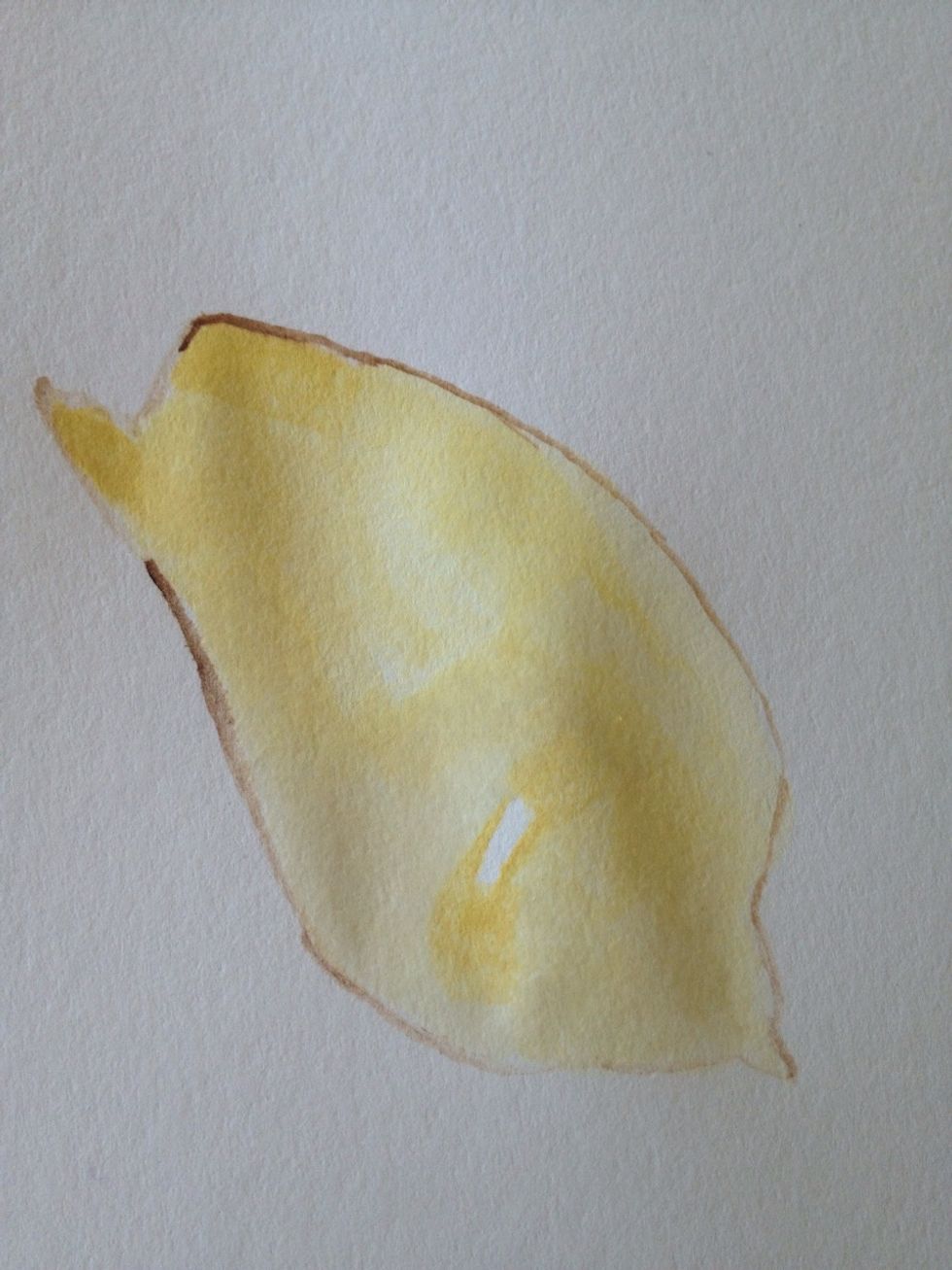
Apply an undercoat wash. Important tip: locate highlights in image and define these with your undercoat. Highlights should remain as the clean white of the page.
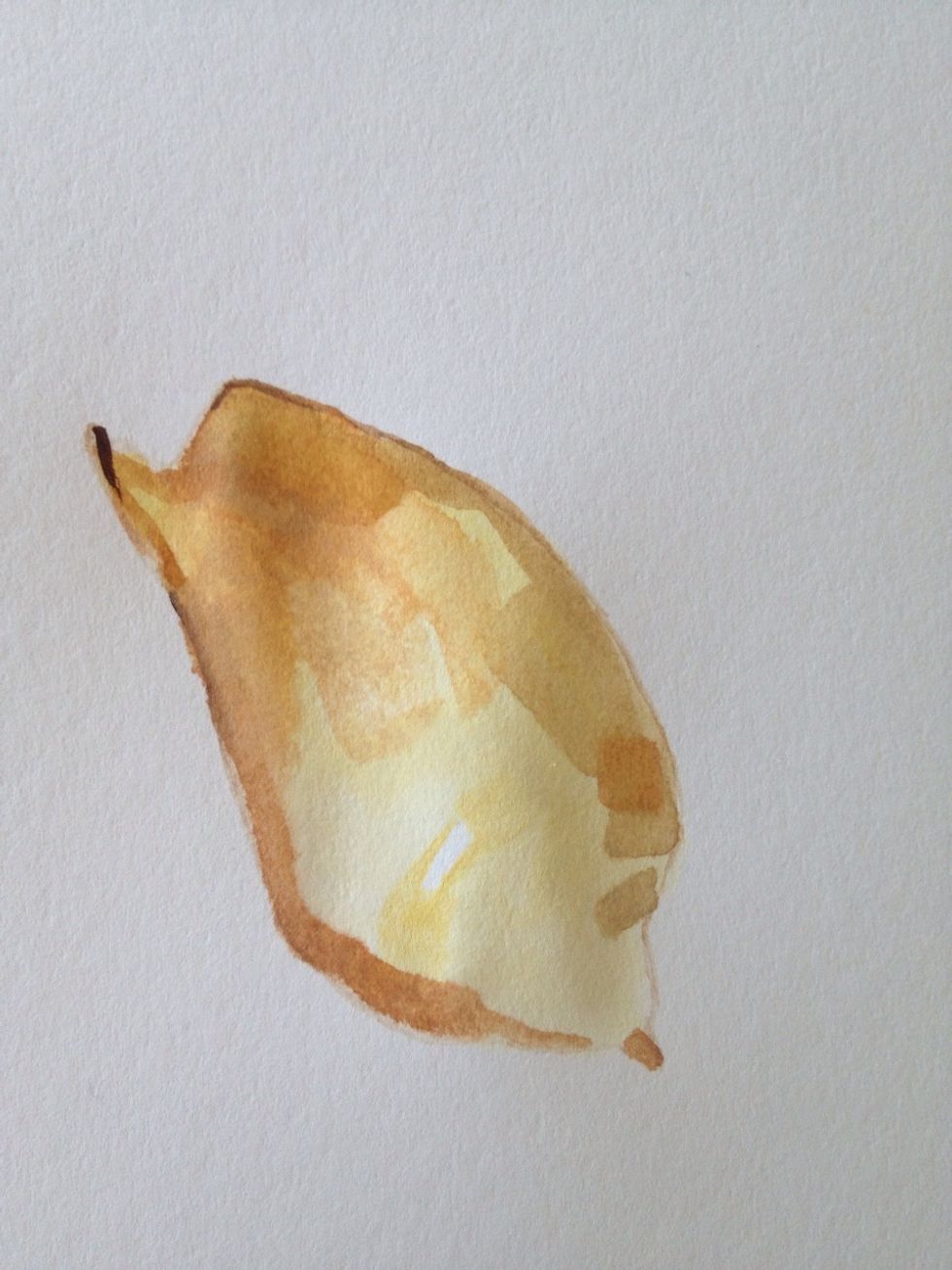
Start building up tonal values carefully, introducing new colours as you go. Avoid black - it flattens the 3-dimensional form. Also be careful to leave highlights as white page.
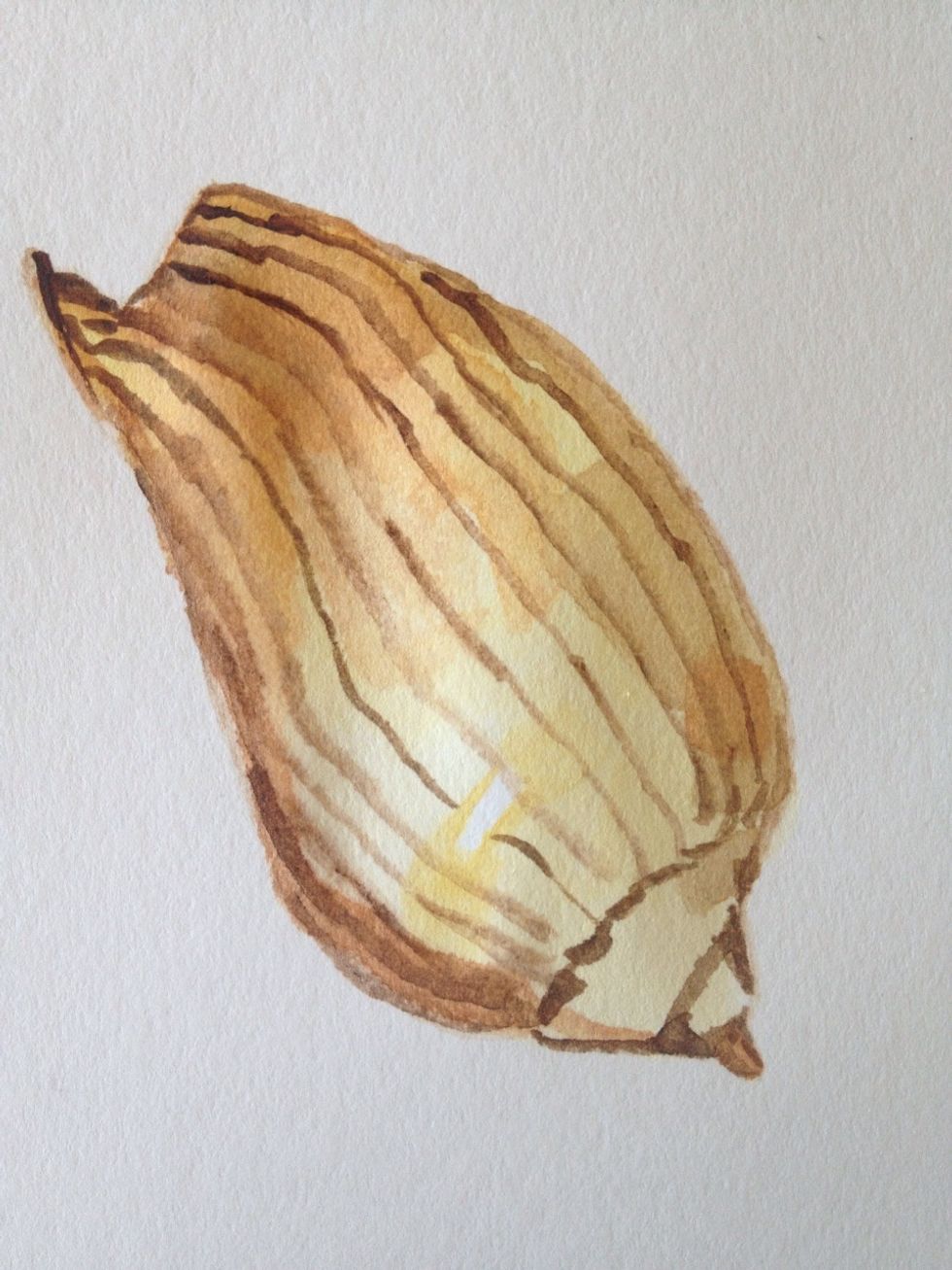
Lightly paint in details of the pattern. As with the outline, paint shouldn't be too dark at this stage, but not too watery either. Test your brush on a tissue first if unsure.
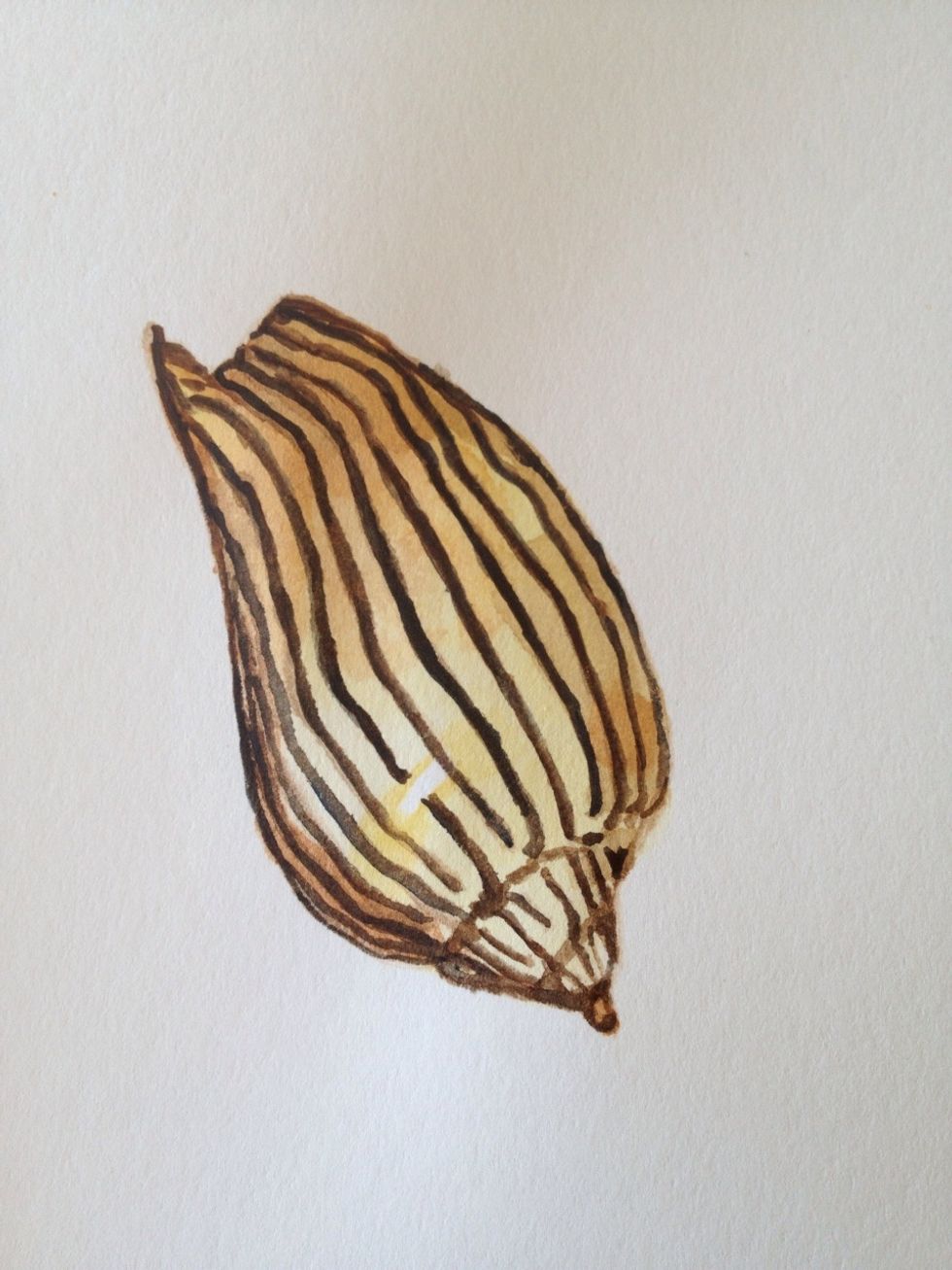
Firm up pattern with stronger pigment. Pay attention to how the pattern describes the form of the shell. If you 'fudge' the pattern your shell may end up losing the illusion of 3-dimensionality.

Finish up by darkening the darkest tonal values of the shell. The higher the contrast between the lightest areas and darkest areas the more the shell will 'pop' off the page.
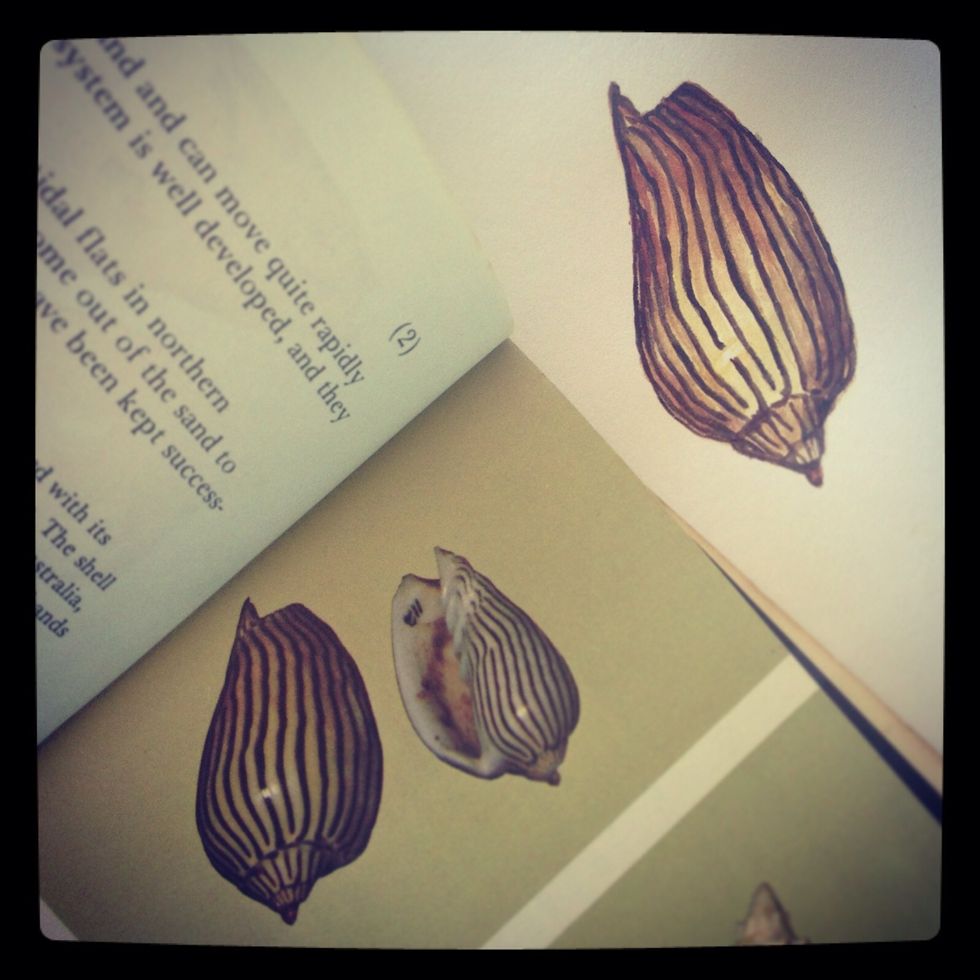
Well done - you've finished! Upload to Instagram to share your beautiful painting :) #watercolour #painting #seashell
- Watercolour paints (12 colours)
- Water
- 2.0 Brushes (different sizes)
- Paper (110gsm or heavier)
- Source image
- 1.0 Tissue